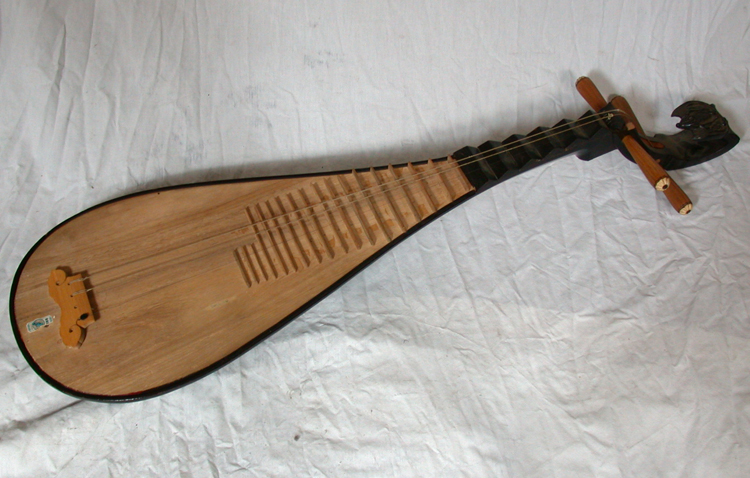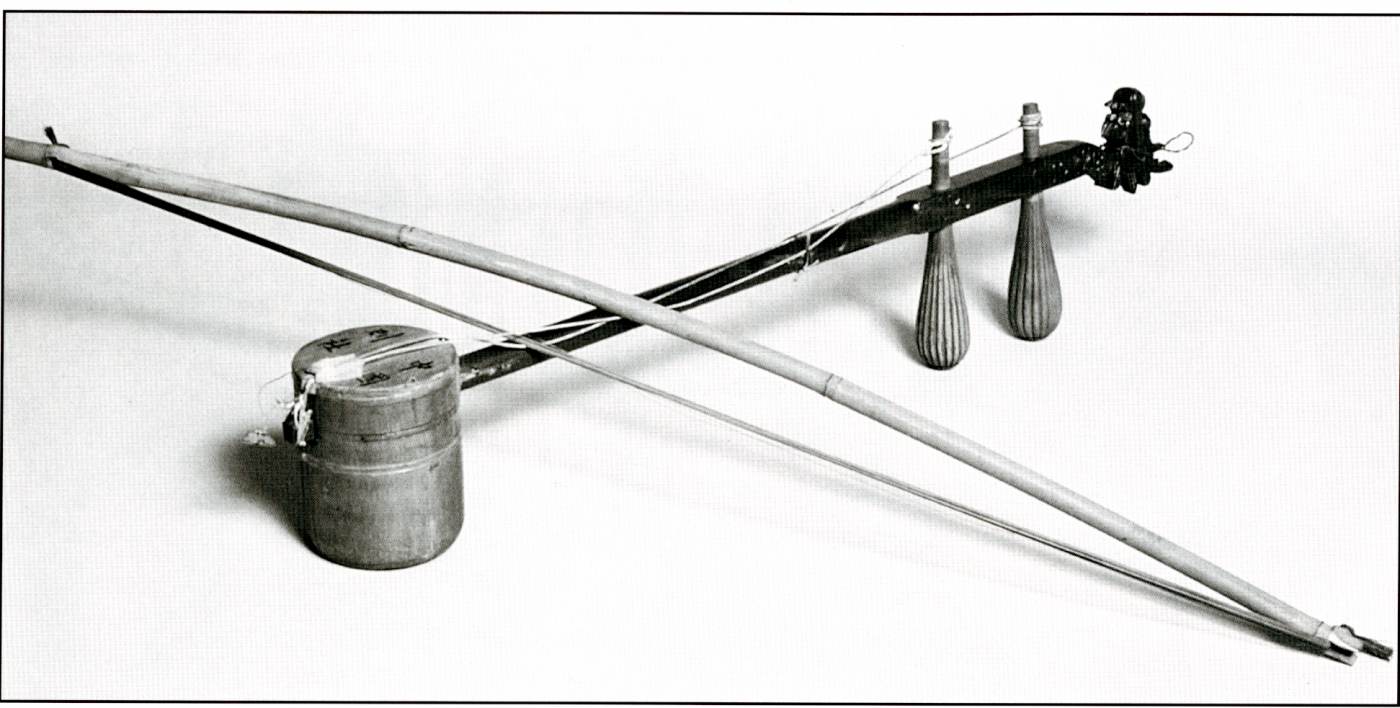The sanxian – literally “three strings” – is a Chinese lute common to Cantonese opera. Its three strings are plucked along a long, fretless fingerboard, which resonate across a box stretched tightly with snake skin. Traditionally, a player would pluck the strings with a thin, hard piece of animal horn, but today most players use a plastic pick or their fingernails.
The sanxian’s sound is percussive and loud, almost like a banjo, and its most similar cousin is the Japanese shamisen, which derived from the sanxian itself. While the sanxian used to be one of the most popular Chinese folk instruments, especially for accompanying voice, today the approximately 2,000-year-old tradition is facing extinction. The sanxian is usually an accompanying instrument that lacks many solo pieces so it is often excluded from Chinese orchestras and seldom taught at conservatories. Those factors along with its high entry cost have cause dwindling interest in the instrument in favor of more popular and user friendly instruments. MOCA’s Chinese Musical Theatrical Association (CMTA) Collection includes a number of rare musical instruments such as this one, among other costumes, photographs, props, and related documents.


